This blog post will break down the pentatonic scale with simple language and audio examples, so it’s easy to understand. There’s no need for a music theory background to stick around and learn!
You’ll discover:
- The difference between the major and minor pentatonic scales
- How to use Pentatonic Scales on the piano
- How to use Pentatonic Scales on the guitar
- How to Spice up Pentatonic Scales with Modes
By the end of this article, you’ll be able to take your songwriting to the next level.
Let’s jump in!
The topic of Music Theory is vast and complicated. It doesn’t have to be complicated and I’ve created a resource that goes through everything you need to know to be a competent musician, songwriter, and producer. I would highly recommend checking out that article as a primer to the rest of this article and other theory posts I have on this site. It’s titled “The Ultimate Guide on Music Theory for Musicians Who Dislike Theory.“
What is the Pentatonic Scale?
A pentatonic scale is a five-note scale. The word “Pente” is a Greek term that means five.
Pentatonic scales are derived from the major scale. They are often used in folk melodies, blues-rock guitar solos, rock music, pop, jazz, heavy metal, and country music.
It may seem like the pentatonic scale is used in all genres of music, and you’d be right to think that!
The pentatonic scale is easy to sing and easy to make great melodies with. It’s tough to make it sound bad over most chord progressions. This makes it an excellent scale choice for a variety of musical arrangements.
How Old is the Pentatonic Scale?
The pentatonic scale comes from a 50,000-year-old idea of the solar system and five planets. It’s based on Ancient Greek philosopher Pythagoras’ theory “Music of Spheres.”
This theory is based on the movement of celestial beings moving through the sun, moon, and planets. This movement is like music.
Sounds crazy, right? It’s almost like a rock opera.
However, don’t worry learning and implementing the pentatonic scale into your music is much easier to understand than ancient philosophy.
What Makes the Pentatonic Scale Sound So Good?
The major and minor pentatonic scale leaves out the fourth and seventh scale degrees (Relative to the Major Key), also called tritones.
Tritones create tension within a melody. This absence of tension in pentatonic scales creates an “easy on the ears” sound.
Why Should You Learn the Pentatonic Scale?
The pentatonic scale is easier to play than the Major and Minor scales and is easier to improvise.
The uncomplicated nature of the pentatonic scale makes it a great starting scale for beginner songwriters.
It’s easy to learn and gives you a solid foundation for writing great melodies.
Why is the Pentatonic Scale Great for Songwriters?
There are many reasons why this scale is perfect for songwriters, but it boils down to one thing…
The pentatonic scale makes sense musically and emotionally!
The pentatonic scale is difficult to use incorrectly. This means that it does not limit creativity, keeps the music flowing, and keeps the process fun.
Major Pentatonic Scale
The major pentatonic scale is built from the first, second, third, fifth, and sixth scale degrees (notes) of the Major Scale.
Since pentatonic scales are easy to play, often, they could be the first type of scale a musician will learn. This is especially true for guitar players.
The C Major Pentatonic Scale (Shown below) is built using the C, D, E, G, and A. Omitting the F and B notes of the C Major Scale.
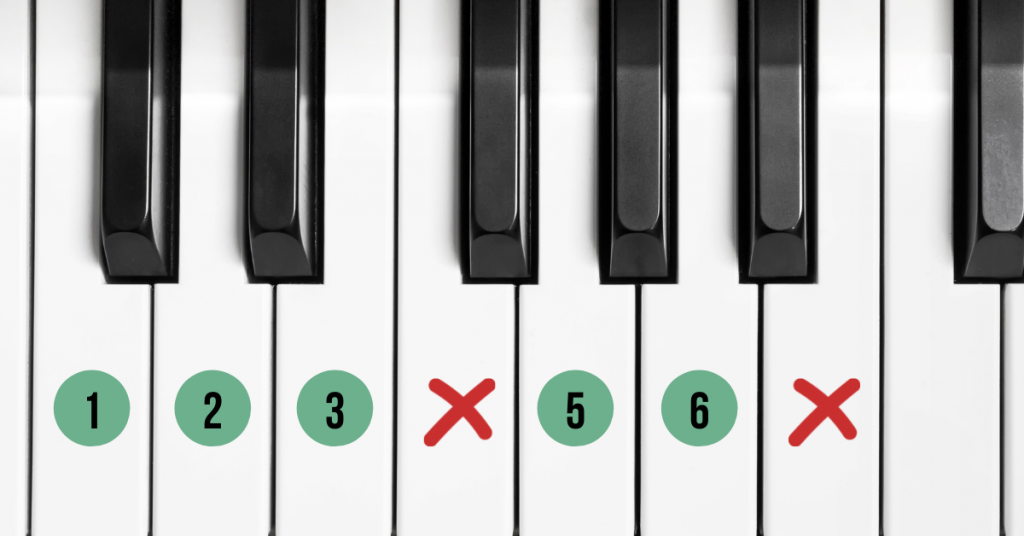
The above diagram shows the intervals between each note in a C major pentatonic. The distance from any note to its next highest or lowest pitch is a whole step (two half-steps) or one and a half steps (three half-steps).
Minor Pentatonic Scale
The best part about pentatonic scales is that the minor pentatonic scale and major pentatonic scale share the same notes.
The only difference is the note you start on. What makes the scale sound minor is the sequence the intervals (distance between the notes) are played.
The minor pentatonic scale intervals are:
Root Note – Flat 3rd (1 and 1/2 step)- 4 (whole step) – 5 (whole step)- Flat 7 (1 and 1/2 step) – Tonic (whole step)
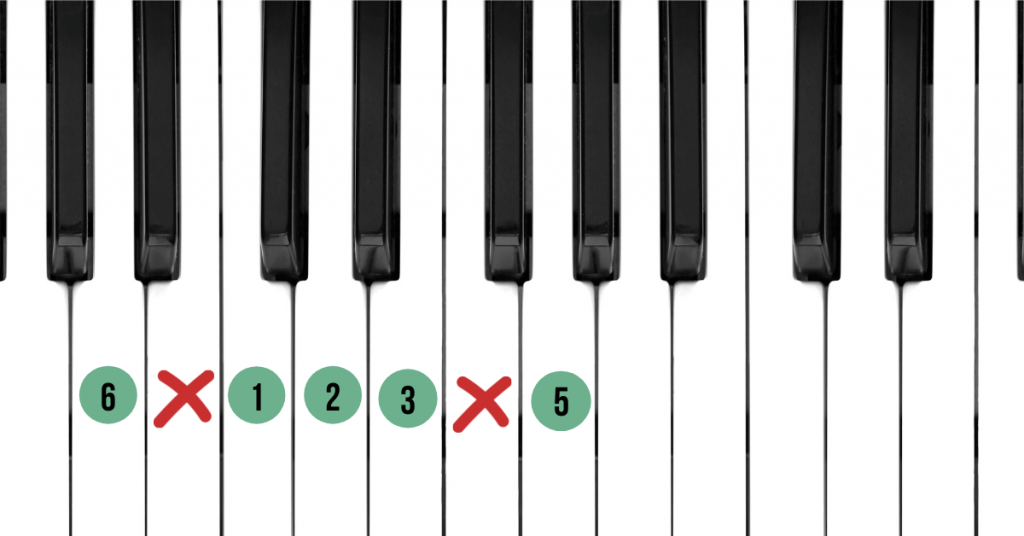
We’ll use the G Major Scale as an example. Each major scale has a relative minor scale that also shares the same notes. The relative minor scale always starts on the sixth scale degree.
For the G Major Scale, this would be the note of E.
The notes in E Minor Pentatonic would be: E, G, A, B, D
These notes are also found in the G Major Scale and are the same notes in the G Major Pentatonic Scale, just in a different order.
Playing Pentatonic on Piano
It’s easiest to see the intervals (the distance between notes) on the piano. Since pentatonic scales comprise whole steps and 1 and 1/2 steps, this can make playing different key signatures a breeze on the piano.
Also, once you know the scale in one octave, you can transpose it to higher and lower octaves with ease, as it will be the same.
The downside of playing pentatonic scales on the piano is that you must first know how to play the major scale. Because each scale comes with varying degrees of sharp notes (black keys on a piano), remembering each scale pattern can become a daunting task.
However, there isn’t a better instrument to learn on when it comes to music theory and learning the notes in the scale.
Playing Pentatonic on Guitar
The beauty of playing the pentatonic scale on guitar is that the different pentatonic scale shapes don’t change no matter what key you play.
This comes with huge benefits but can also have its downside.
The benefit is you can learn one of the pentatonic scale shapes and jump into pretty much any jam session and make things sound good.
The downside is it’s easy for guitarists to focus on shapes alone and neglect the music theory and notes behind what they are playing. This can hold you back from getting more sophisticated with your note selection.
However, the ease of learning and playing pentatonic scales on the guitar is why this may be the first (and in some instances) only scale some beginning guitar players ever learn.
The CAGED Pentatonic Patterns
Now let’s learn some of these pentatonic scale shapes so you can start practicing and applying them to your music today.
The CAGED system is an easy way to unlock the fretboard with five easy patterns or chord shapes. These patterns are based on open guitar chords C, A, G, E, and D.
Not only can these chords shapes be moved throughout the fretboard, but their associated major scales can be “copy and pasted” as well.
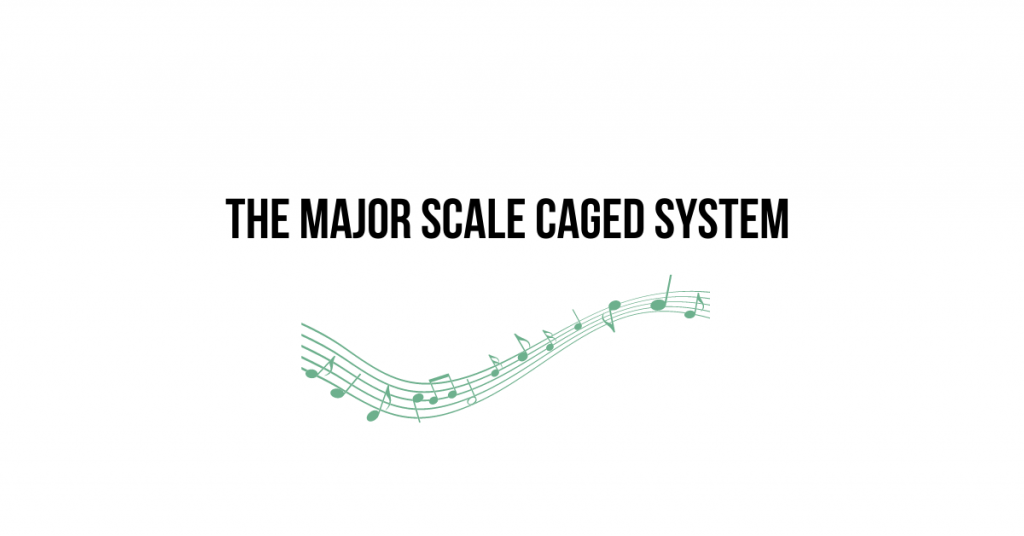
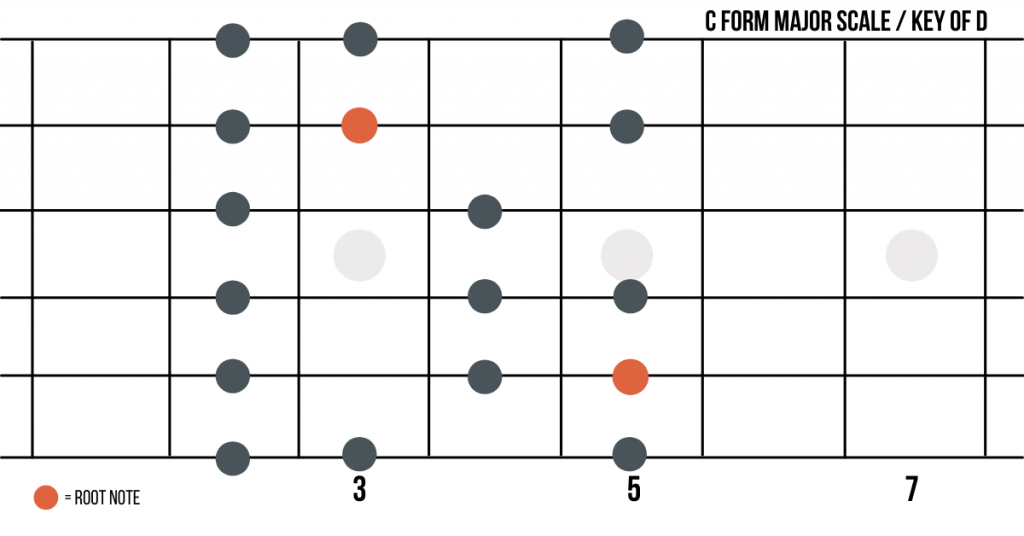
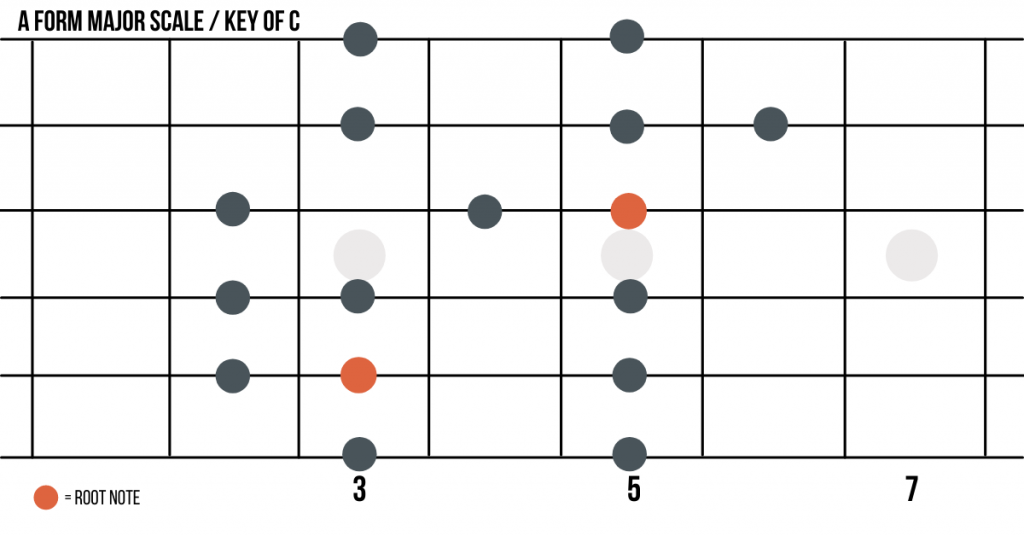
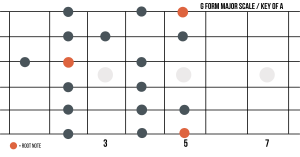
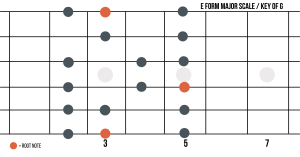
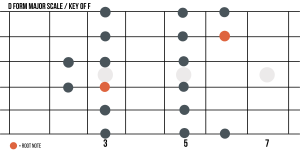
Since the pentatonic scale is just the removal of the 4th and 7th from the major scale, we can apply pentatonic scales to the CAGED system.
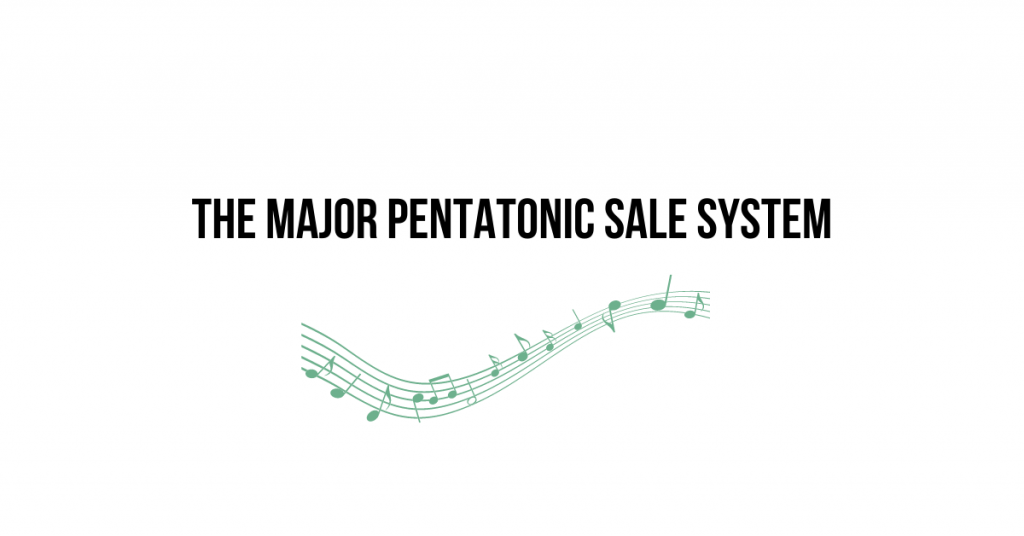
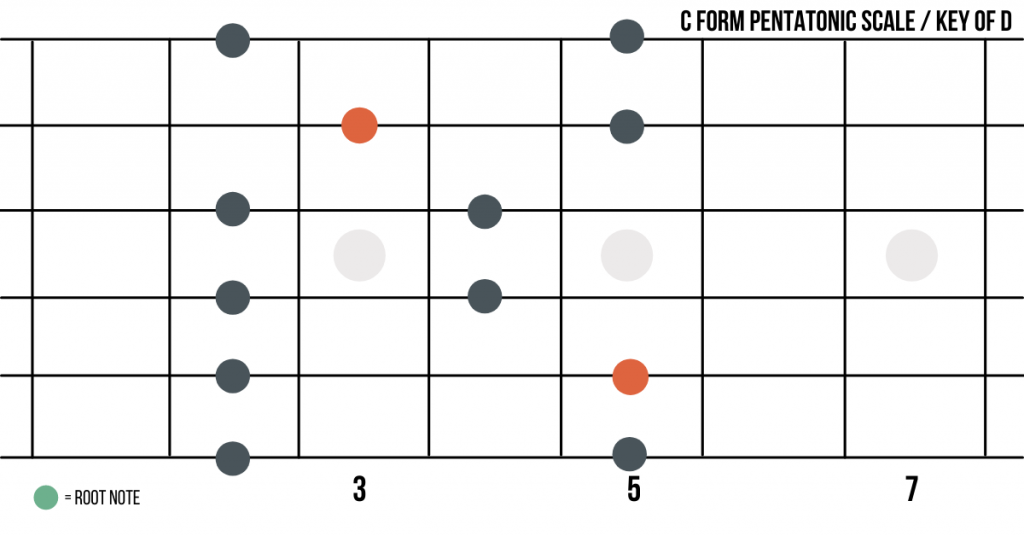
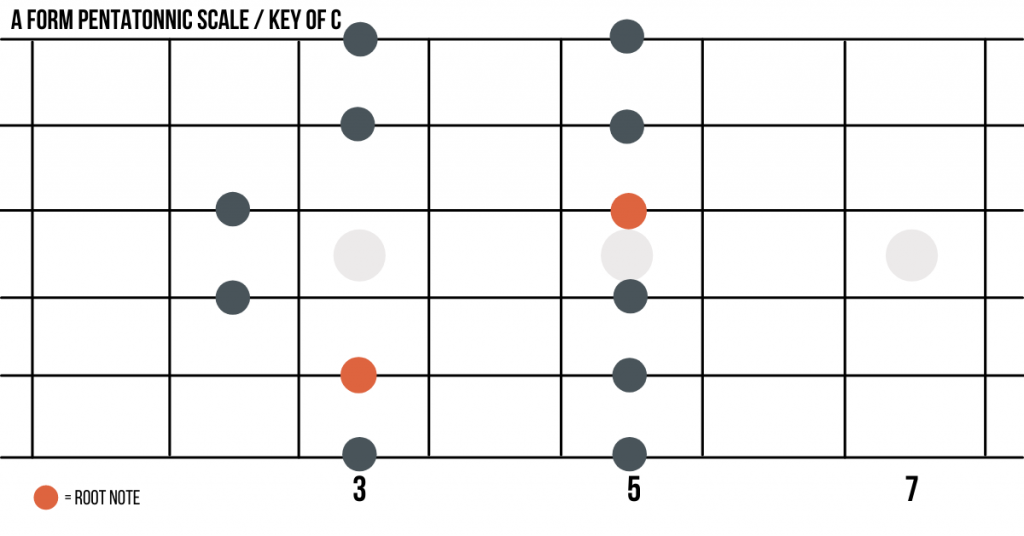
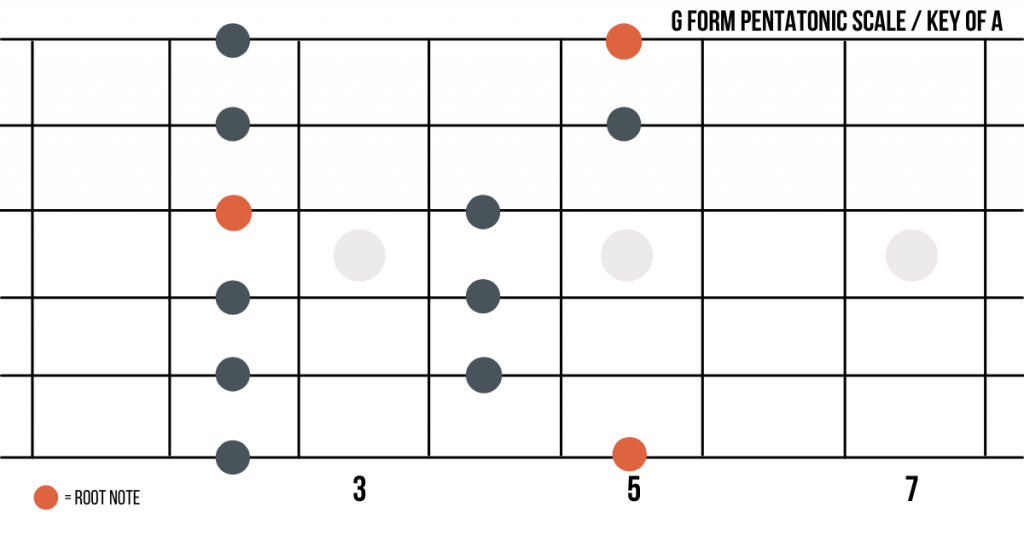
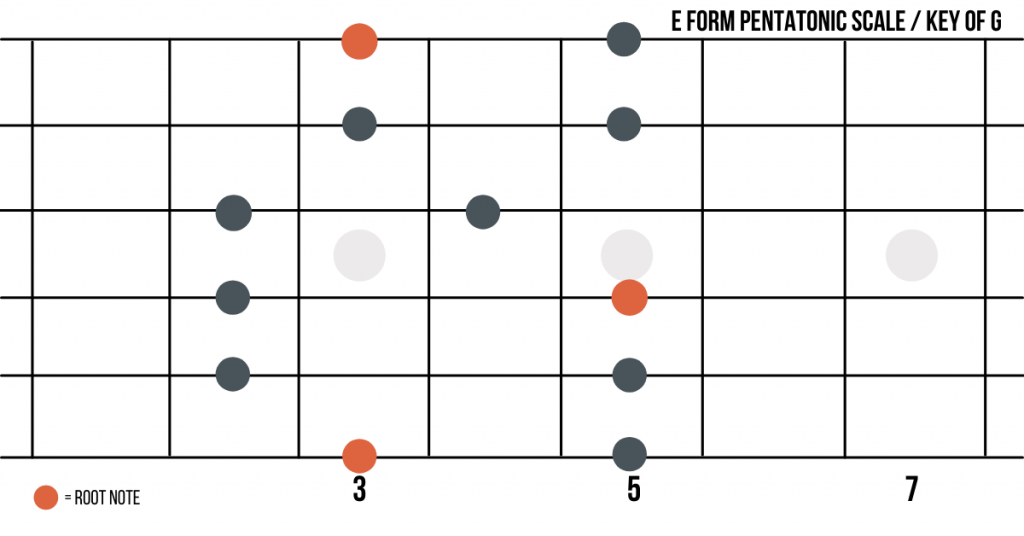
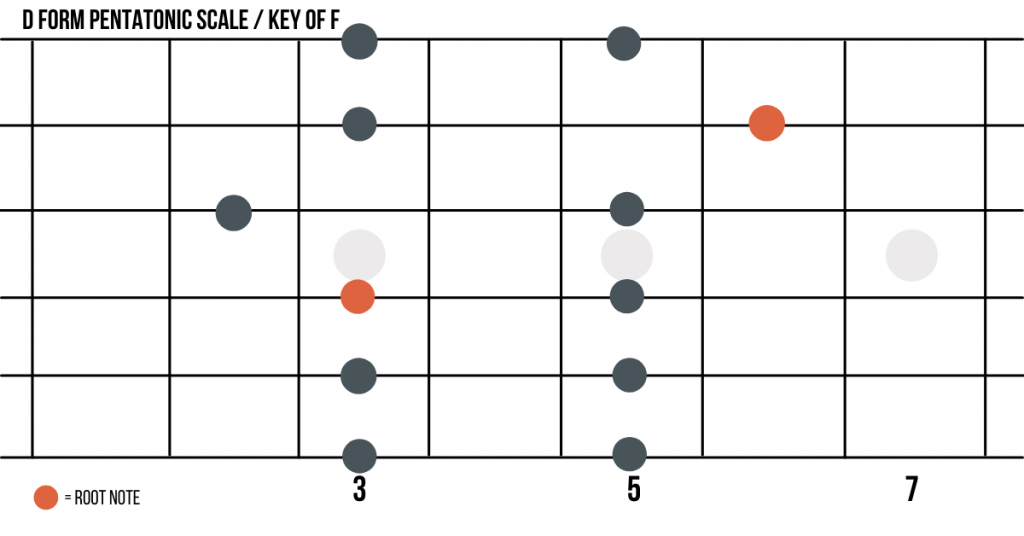
Out of all of the pentatonic scale shapes, the G Form is the most popular. This is because the root note (first note of the scale) will start on the low E string of the guitar.
The best part is alternating between the major and minor pentatonic scale from the G pentatonic form couldn’t be more straightforward. Simply drop three frets from the root note and play the same shape, and you will have the minor pentatonic in the E Minor Form.
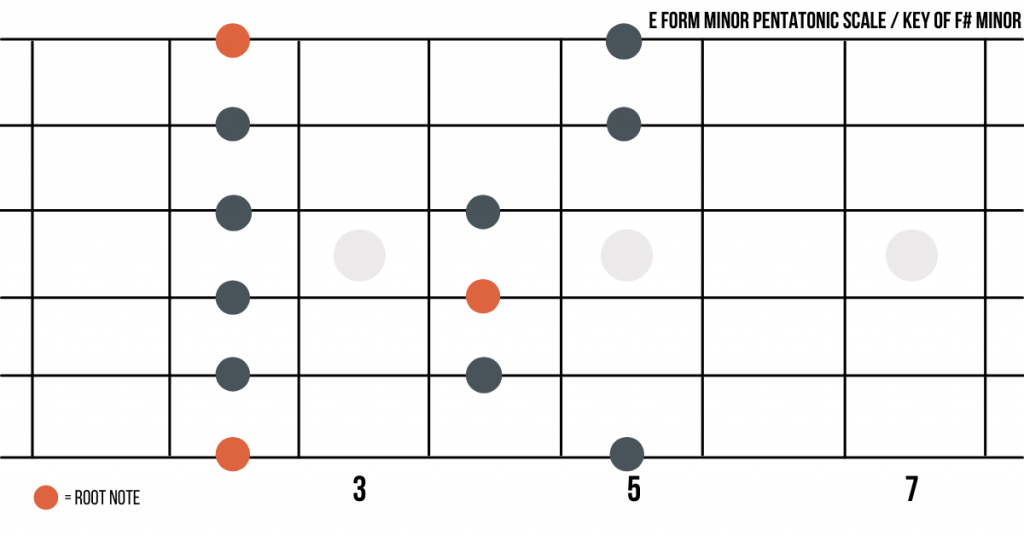
However, as you progress, utilizing different CAGED forms on the fretboard will open you up to tones you can’t access with just the G Form. So learning the other patterns and incorporate them into your playing is crucial.
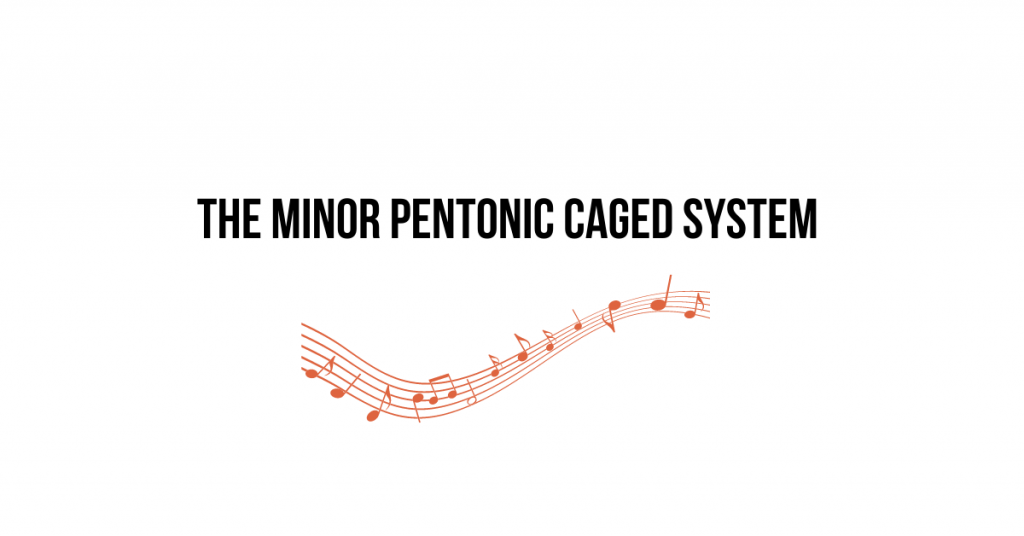
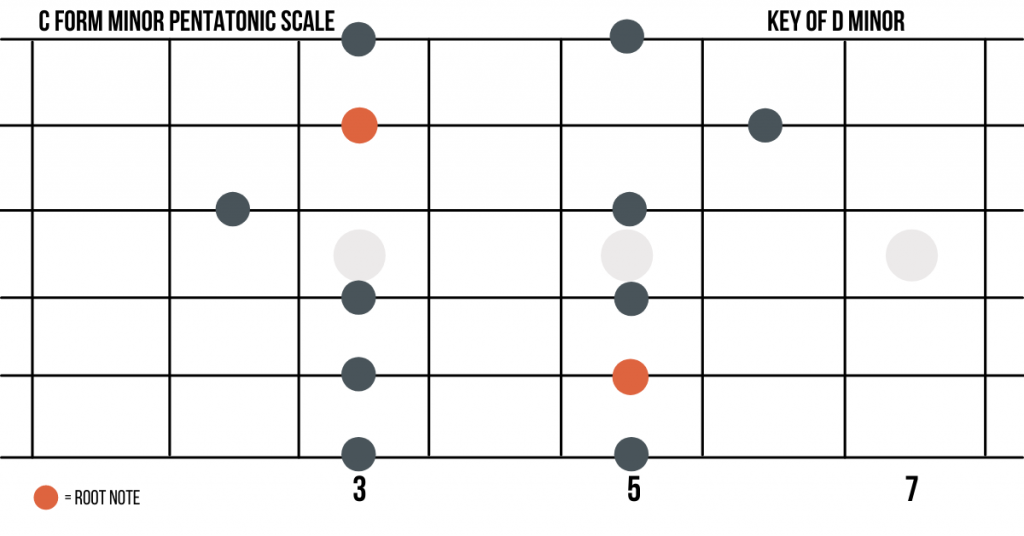
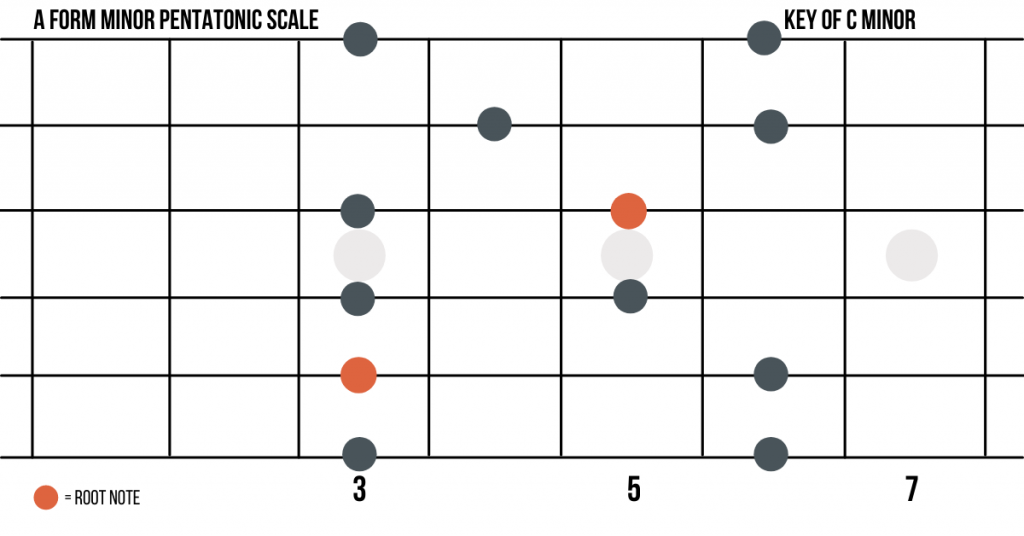
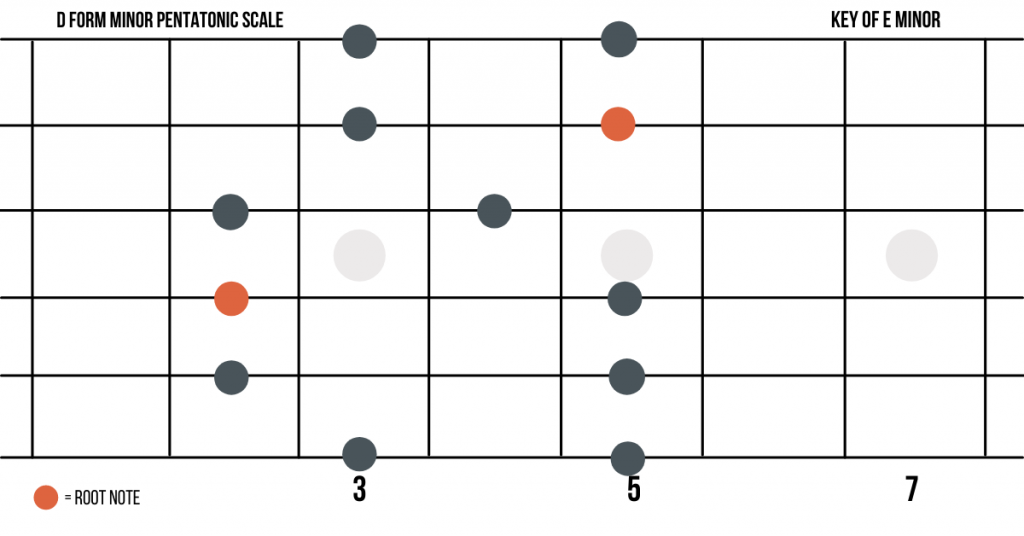
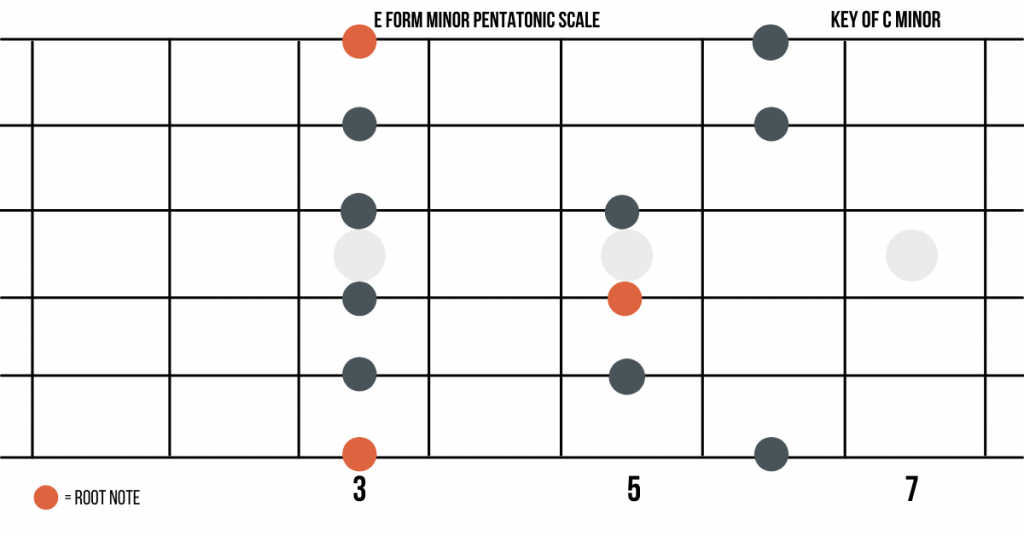
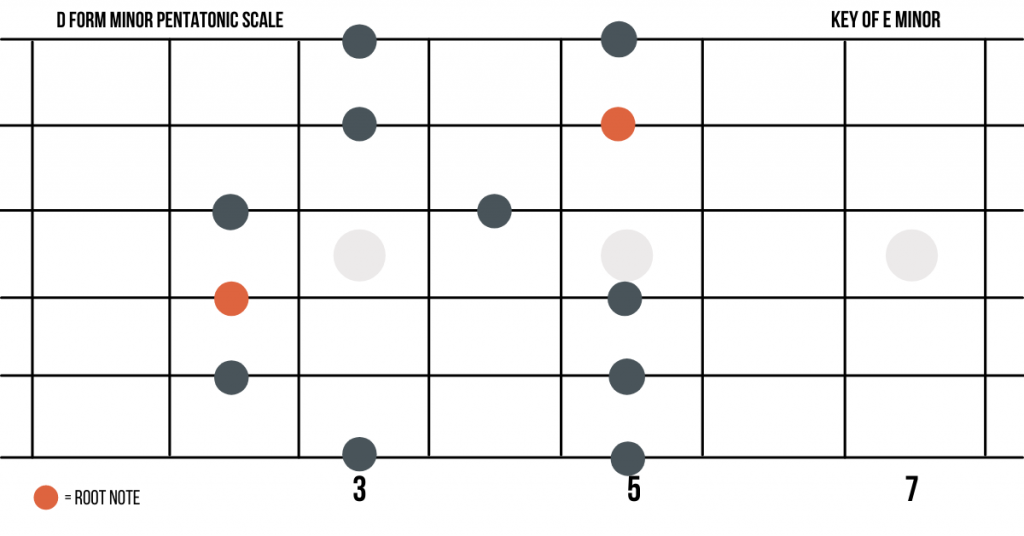
Pattern Variation
The caged system is a great way to understand how to play across your fretboard. However, to take this concept a step further, you should know how to transition between the positions smoothly.
To accomplish this, we are going to take a look at Diagonal Shapes.
Diagonal shapes allow you to smoothly transition through different octaves while writing songs on the guitar and utilize all of the CAGED forms in your playing.
When you utilize diagonal shapes, you’ll start turning heads for sure!
Diagonal Major
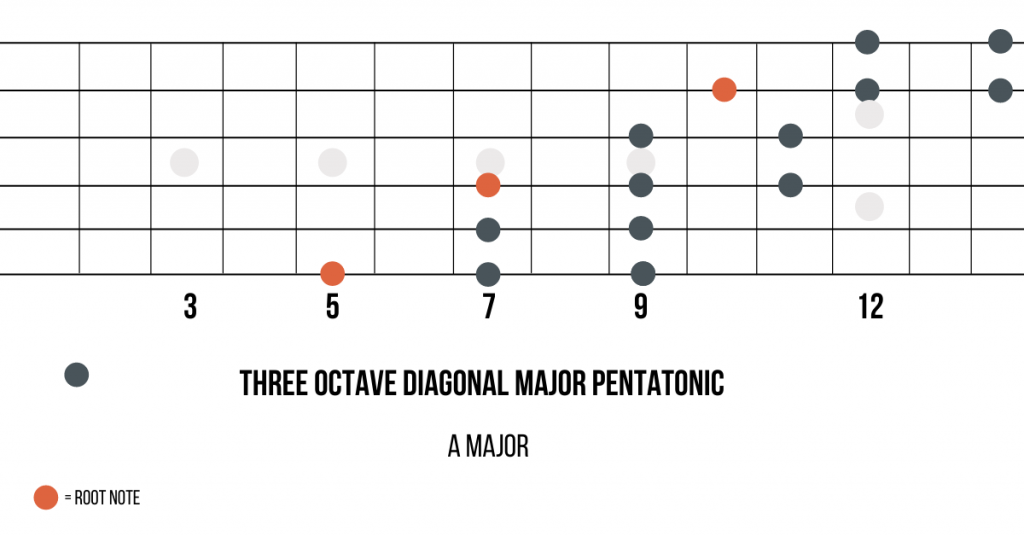
Diagonal Minor
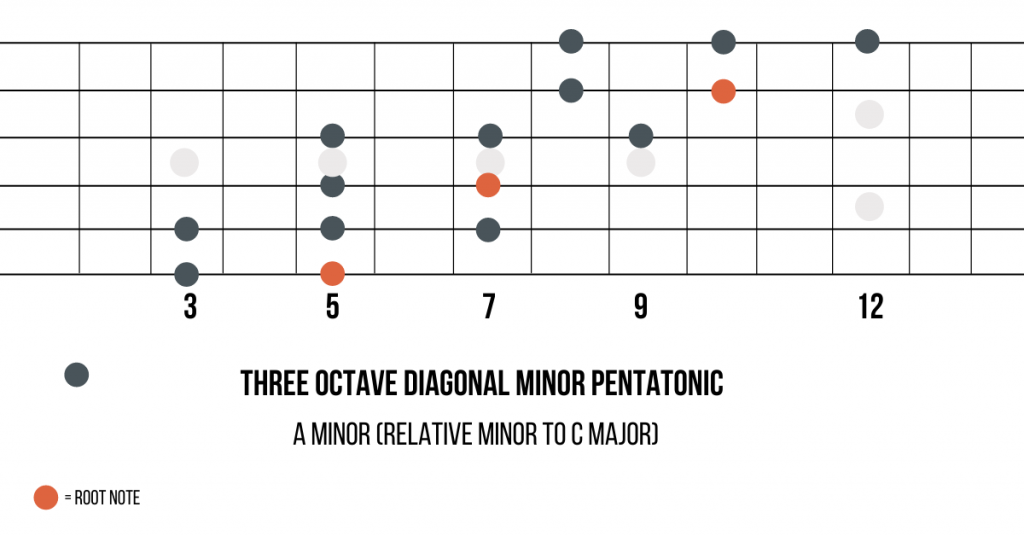
Singing Pentatonic Melodies
Using the pentatonic scale to write melodies is a match made in heaven. If you follow my guide on how to write melodies and get to the singing gibberish section, sticking with the pentatonic notes will give you lots of melodic variations to choose from.
It also ensures that your melody is easy on the ears and connects with a broad audience.
Adding Variety to the Pentatonic Scale
As you become more confident writing music with the pentatonic scale, you can start experimenting with other related notes outside the scale. This can add more color, variation, and intrigue to your song.
Blues Scale
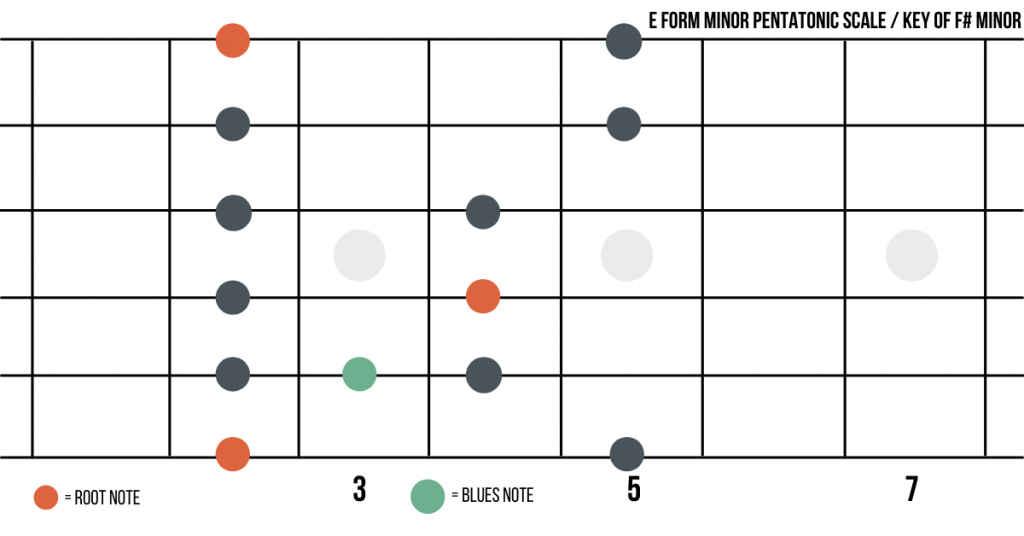
The blues scale is a minor pentatonic scale that adds in a “flat 5.” This technically turns what you are playing into a hexatonic scale. Still, we’ll save that for another lesson in music theory.
Modes
Modes are also derived from the major scale, and each has its own distinct flavor. Modes get their color from the interval (space between notes). You can use these colors to drastically alter the mood of your pentatonic scale.
To learn more about modes click here.
Modes can be either major or minor, so choosing which notes to add to your pentatonic scale will depend on this.
Major Modes
Adding Ionian
The Ionian mode is the major scale. So if you add back the 2nd and the 7th scale degree, you’ll have the Ionian Mode or Major Scale flavor.
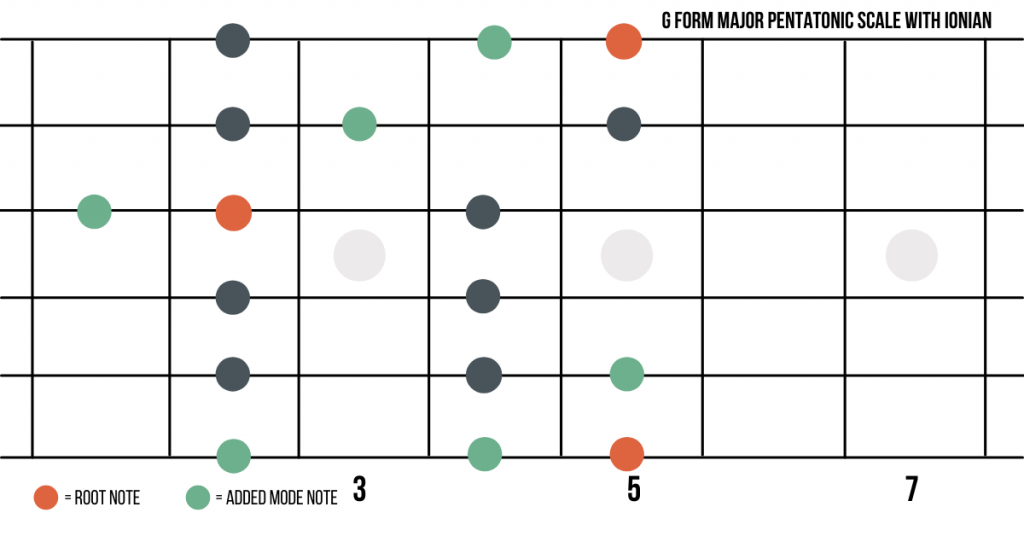
Adding Lydian
If you add a sharp 4 into your major pentatonic scale, you will create a Lydian flavor.
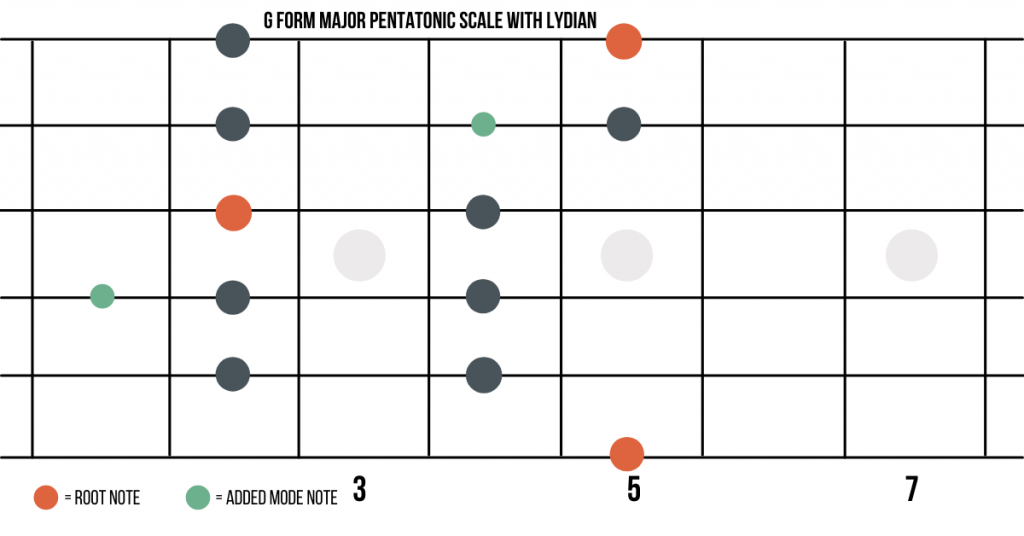
or a full article on the dark and mysterious power of Lydian, please refer to my article on the Lydian Mode here.
Adding Mixolydian
If you add a minor 7 into your major pentatonic scale, you will create a Mixolydian flavor.
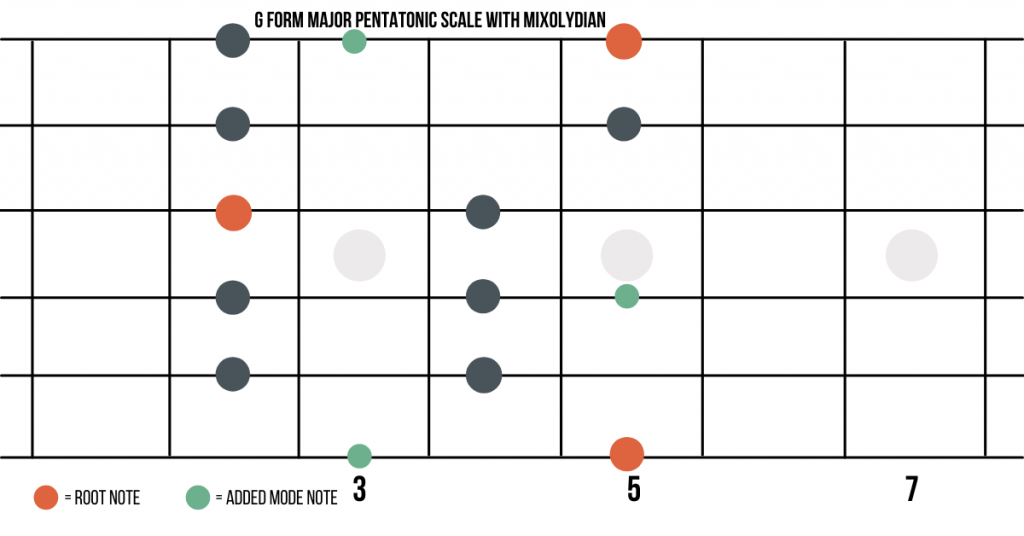
For a full article on the dark and mysterious power of Mixolydian, please refer to my article on the Mixolydian Mode here.
Minor Modes
Adding Dorian
If you flat the 3rd scale degree of the minor pentatonic scale, you will create a Dorian flavor.
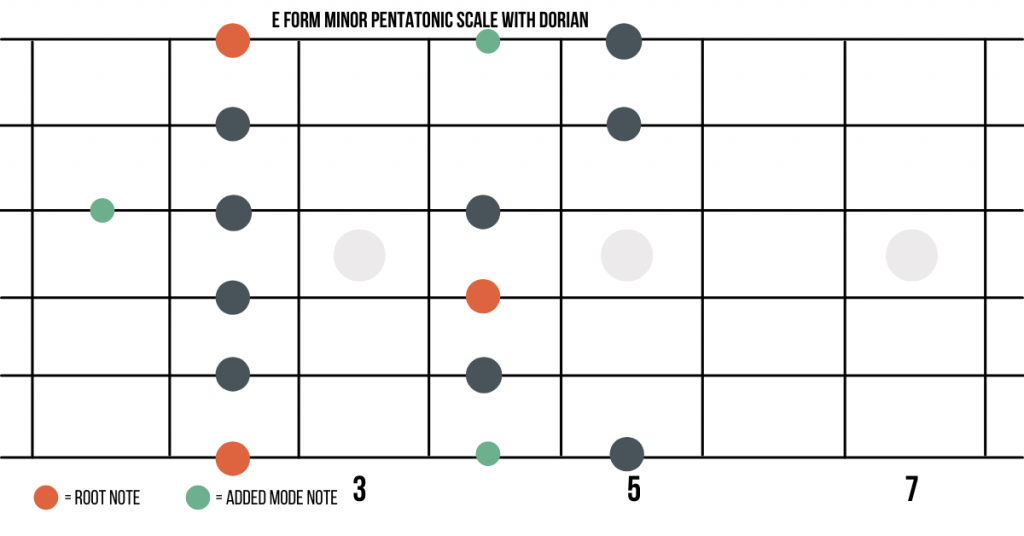
For a full article on the dark and mysterious power of Dorian, please refer to my article on the Dorian Mode here.
Adding Phrygian
If you add a flat 2nd scale degree of the minor pentatonic scale, you will create a Phrygian flavor (I call dibs on this band name).
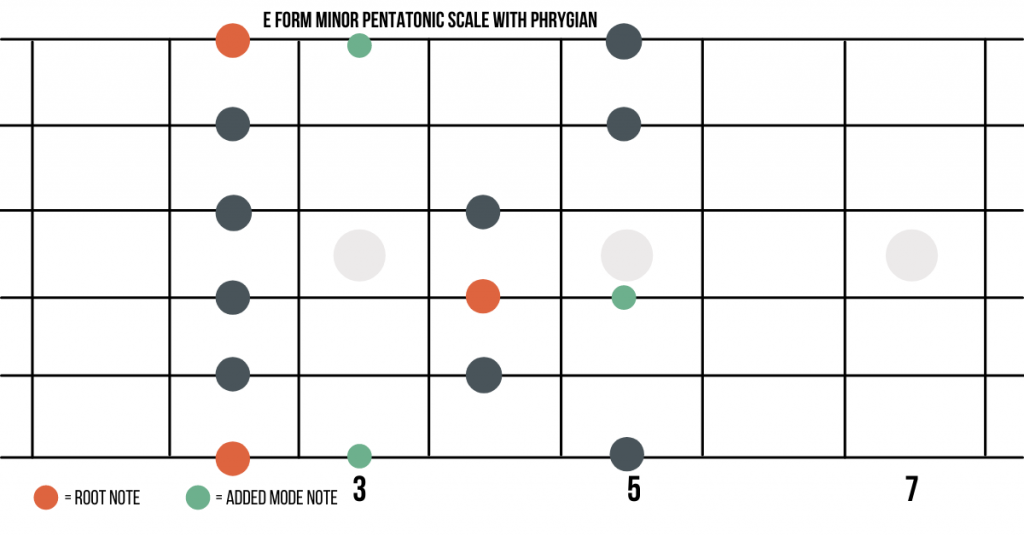
For a full article on the dark and mysterious power of Phrygian, please refer to my article on the Phrygian Mode here.
Adding Aeolian
If you add a 2nd scale degree and a flat 6th scale degree of the minor pentatonic scale, you will create an Aeolian flavor.
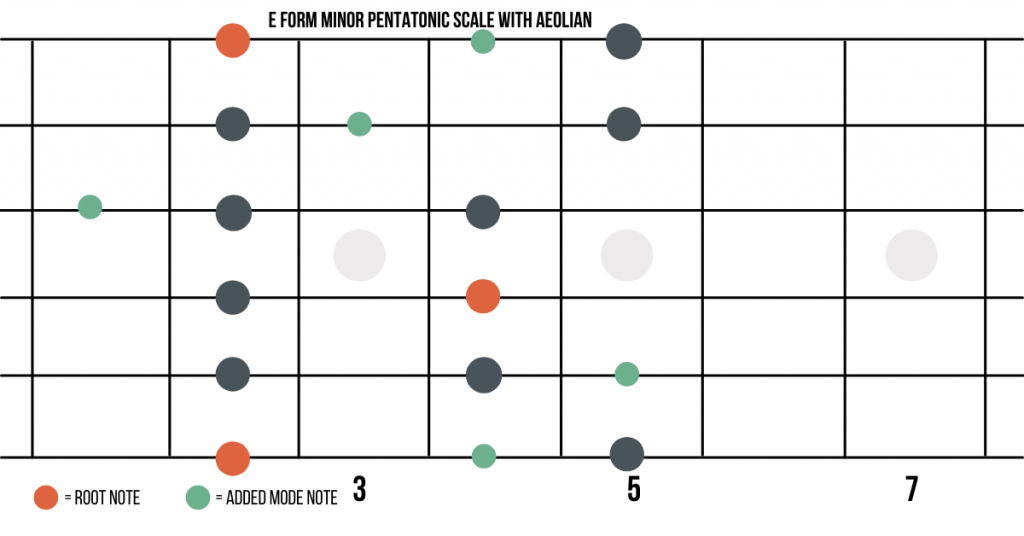
For a more in-depth breakdown of the Aeolian Mode and the other Minor Scales, please reference my article “Aeolian Scale vs. The Minor Scales | How to Leverage These Sad and Beautiful Sounds.”
Best Practices for Playing the Pentatonic Scale
The pentatonic scale is popular because it just sounds good. However, it is still possible to choose “bad” notes.
Here are some general guidelines to follow when using these scales.
- If the underlying chord is major, then play the major pentatonic scale.
- If the underlying chord is minor, then play the minor pentatonic scale.
- If adding modes, make sure the chords underneath contain the modal note to prevent clashing.
What to Do Next?
The pentatonic scale is an excellent starting point to learning music theory because it covers a lot of ground with only five notes.
If you master this scale, you will feel more confident writing great melodies and improvising in all genres of music.
Using this knowledge coupled with my article on how to write hit songs will have you impressing your friends in neighbors in no time.
So what are you waiting for? Go write a song and change the world!

